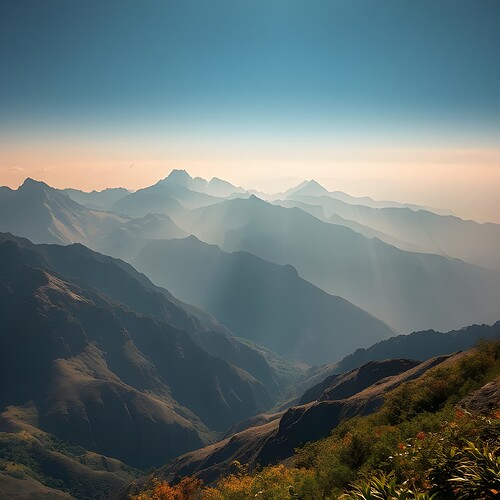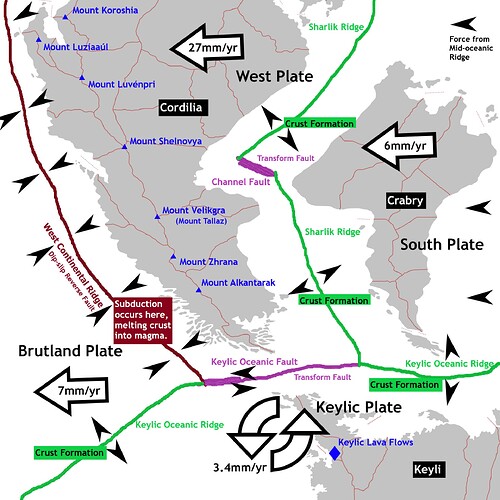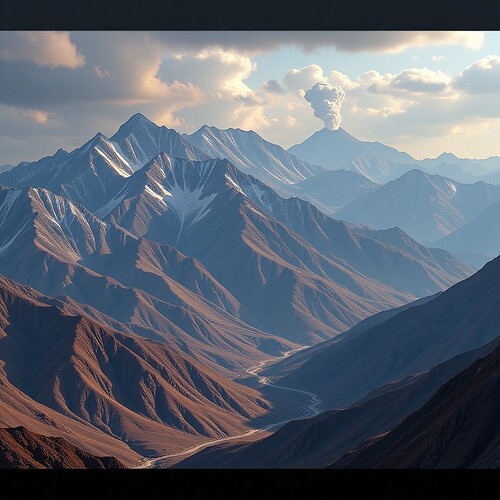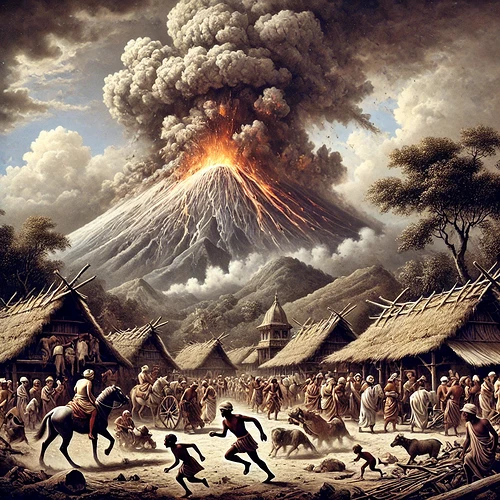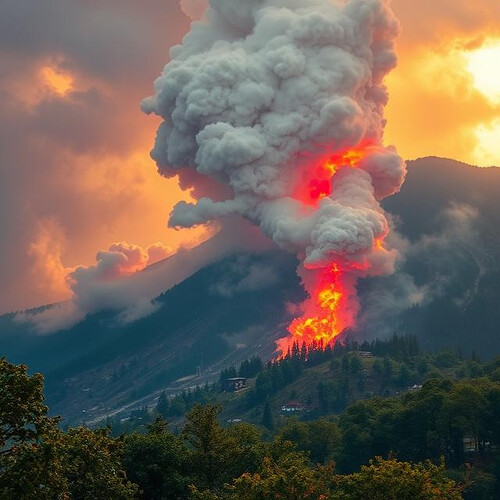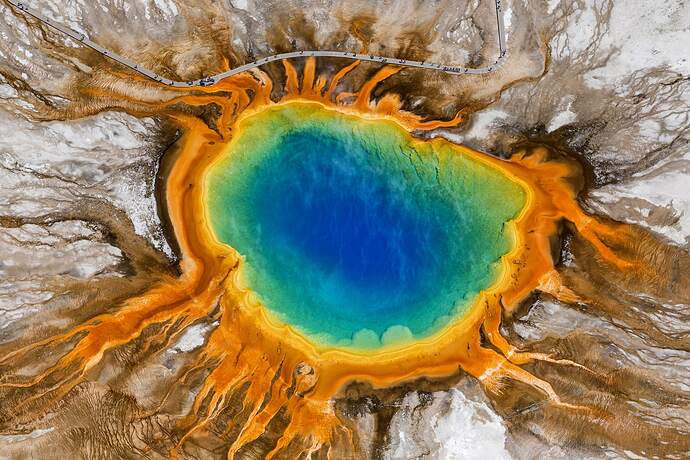Early Settlements in Central and North Krauanagaz
Archaeology, South Cordilian Studies, General Anthropology, General History
By the Alkantara Institute of Archaeology, Department of Early Civilizations; PUZ Yayyára; & PULA Panata
Abstract
The history of Krauanagaz’s early settlements offers a window into the social, economic, and cultural transformations that defined the region’s prehistoric and protohistoric eras. Drawing from a diverse body of evidence— archaeological sites, oral traditions, and the emerging field of environmental archaeology —this paper synthesizes current understanding of settlement patterns, early agrarian practices, and sociopolitical dynamics. This work also highlights contentious debates, such as the influence of migratory groups versus indigenous development, and discusses new discoveries that reshape foundational narratives about Krauanagaz’s early history.
Note: For the purposes of this article, “Krauanagaz,” refers to the entirety of the former Mitallduk Confederacy, and the Krauanagaz Federation on the western coast of south Cordilia.
1. Introduction
The early settlements of Krauanagaz represent a vital cornerstone in understanding the region’s journey toward becoming a complex civilization. These ancient communities laid the foundations for its political structures, cultural traditions, and economic systems. Historians and archaeologists have long sought to uncover the intricacies of these formative periods, with recent advancements in research methodologies shedding new light on the complex interplay between geography, human innovation, and external influences.
Located at the crossroads of diverse ecological zones— ranging from coastal plains and fertile river valleys to rugged mountain ranges— the land offered both opportunities and challenges for early inhabitants. The availability of water sources, arable land, and navigable waterways shaped settlement patterns and encouraged early agricultural experimentation. However, the region’s susceptibility to natural disasters, such as seismic events, floods, and droughts, tested the resilience and adaptability of these communities.
Recent interdisciplinary research efforts have transformed our understanding of this period. Archaeological excavations have uncovered evidence of rudimentary urban planning, early metallurgy, and long-distance trade networks dating back millennia. Meanwhile, advances in genetic research have traced complex migratory patterns, suggesting that early Krauanagazan communities were shaped by waves of interaction with neighboring cultures. Paleoenvironmental studies have provided a clearer picture of how climate fluctuations influenced the development, decline, and relocation of settlements across time.
Despite these breakthroughs, many questions remain unanswered. The origins of several cultural practices, such as the construction of ceremonial stone circles and intricate burial customs, are still debated. The degree to which foreign traders and settlers influenced early Krauanagazan technology and governance structures continues to be a focal point of scholarly contention.
As research continues, the study of Krauanagaz’s early settlements not only enriches our understanding of its historical trajectory but also offers valuable insights into the dynamics of adaptation and innovation in ancient societies. These lessons remain relevant today as Krauanagaz faces its own modern challenges in an interconnected and ever-changing world.
2. Theoretical Frameworks and Methodologies
Modern research into the early settlements of Krauanagaz has been enriched by a variety of interdisciplinary approaches and technological advancements. These frameworks and methodologies have provided scholars with deeper insights into how ancient communities interacted with their environments, adapted to changing circumstances, and established enduring cultural practices.
Environmental Archaeology:
Environmental archaeology has emerged as a crucial tool for reconstructing past landscapes and understanding human-environment interactions. By analyzing sediment cores, pollen samples, and isotopic data from archaeological sites, researchers have been able to trace significant climatic shifts that shaped the trajectory of settlement development.
For instance, the transition from the humid climate of 9,000 BCE to the progressively drier conditions of 7,000 BCE profoundly influenced human habitation patterns. This climatic shift coincided with a gradual migration of communities from the floodplains of the Kraudukra River toward more stable upland environments. As the availability of freshwater dwindled and soil fertility declined in the lowlands, early inhabitants were forced to develop innovative irrigation systems and terraced farming techniques in the foothills of the Luzayyagaz Mountains.
Genetic Analysis:
Advances in genetic research have shed light on the migratory dynamics that shaped early Krauanagazan populations. Comparative DNA studies have revealed surprising links between contemporary Krauanagazan groups and migratory populations originating from southern Cordilia. These findings suggest that the Late Neolithic period (roughly 5,000 to 3,000 BCE) was marked by significant demographic flux as waves of migration introduced new genetic lineages, technologies, and cultural practices.
This genetic evidence supports archaeological findings of increased material diversity during this period, including the introduction of advanced pottery techniques and metalworking. Scholars speculate that these external influences may have catalyzed the region’s transition from simple agrarian communities to more socially complex societies capable of long-distance trade and sophisticated governance structures.
Digital Surveying and Remote Sensing:
The integration of Geographic Information Systems (GIS) and remote sensing technologies has revolutionized archaeological research in Krauanagaz. High-resolution satellite imagery and LiDAR (Light Detection and Ranging) scanning have enabled researchers to identify previously undiscovered settlement clusters, particularly in the densely forested and mountainous regions of the Luzayyagaz foothills.
These technological tools have confirmed longstanding oral histories that spoke of forgotten agrarian communities nestled within the valleys and ridges of the region. Some of these sites have revealed evidence of advanced irrigation networks and ceremonial structures, suggesting that these communities played a pivotal role in shaping the cultural and agricultural landscape of early Krauanagaz.
Ethnoarchaeology:
Ethnoarchaeological studies, which involve examining the practices of present-day indigenous communities to understand ancient lifeways, have also been invaluable. By observing the Lupritali people’s sustainable farming techniques and their methods for building communal dwellings, researchers have drawn parallels to architectural features and agricultural remains found at early settlement sites.
3. Settlement Patterns and the Evolution of Society
3.1. Paleolithic Foragers and Early Habitation
Evidence from Paleolithic sites, such as Krauvineta I, has revealed the presence of early foraging groups as far back as 40,000 BCE. Situated along ancient riverbanks and coastal regions, these temporary camps were strategically positioned to exploit diverse ecosystems for sustenance.
These groups were expert hunters of megafauna, including now-extinct species of giant herbivores, and they complemented their diet by gathering wild tubers, berries, and edible roots. Advanced flint-knapping techniques identified at Krauvineta I demonstrate a surprising degree of technological sophistication. Tools such as spear points, scrapers, and perforators suggest that these early inhabitants had developed specialized hunting strategies and complex social behaviors.
Recent isotopic analyses of bone fragments from Krauvineta I indicate seasonal patterns of movement, supporting theories that these Paleolithic groups followed migratory game routes across vast landscapes. Despite their transient lifestyle, evidence of symbolic artifacts, including ochre-stained stones, hints at emerging cultural practices and a nascent sense of identity among these early inhabitants.
3.2. The Advent of Agriculture and Permanent Settlements
Between 10,000 and 7,000 BCE, Krauanagaz experienced its first agricultural revolution, fundamentally reshaping its social and economic structures. The transition from foraging to food production was driven by both environmental changes and the increasing pressure to sustain growing populations.
One of the most significant sites from this period is Ket’rani-Kallar, located near the modern city of Ket’hran. Excavations have uncovered extensive evidence of millet and early barley cultivation, as well as the domestication of caprines such as goats and sheep. These agricultural developments allowed communities to establish more permanent settlements and engage in food surplus storage, which supported population growth.
Notably, rudimentary irrigation channels discovered at Ket’rani-Kallar indicate early attempts at water management, a technological leap that mitigated the risks of erratic rainfall and boosted agricultural yields. The site also features circular dwellings with stone foundations, suggesting that these communities had begun constructing more durable structures to withstand seasonal climatic challenges.
Interregional trade networks likely emerged during this period, as evidenced by the discovery of obsidian fragments originating from distant volcanic regions. Such findings imply that Krauanagazan communities were not isolated but rather connected to a broader web of cultural and economic exchanges.
3.3. Proto-Urban Centers
By 3,000 BCE, the socio-political landscape of Krauanagaz had evolved to include proto-urban centers characterized by centralized storage, ritual activities, and emerging governance systems. Among the most prominent of these sites is Zarayatal-Hunak, situated along a strategic trade corridor in the Luzayyagaz foothills near what is today the Krauanagaz-Zuhlgan border.
Zarayatal-Hunak exhibits several hallmarks of early urban planning, including granaries for surplus grain storage, ceremonial complexes likely used for religious or communal gatherings, and clusters of administrative structures that hint at rudimentary governance. The architectural layout suggests a deliberate attempt to organize space for both civic and ritual purposes.
One of the most remarkable discoveries at Zarayatal-Hunak is a set of engraved stone tablets bearing proto-script markings. Scholars continue to debate whether these markings represent an early form of writing or a symbolic system used for record-keeping. If confirmed as proto-writing, this finding would position Zarayatal-Hunak as a key player in the development of early literacy in Southern Cordilia.
Ceramic analysis from the site has revealed intricate designs that mirror motifs found in neighboring regions, suggesting cultural diffusion and artistic influence through trade and migration. The presence of metallurgical workshops further underscores the technological advancements of this period, with evidence of early copper smelting and tool production.
Together, these developments highlight a period of significant social complexity and innovation. The proto-urban centers of Krauanagaz laid the groundwork for the emergence of fully developed city-states, which would later define the region’s political and cultural landscape.
4. Major Debates in Krauanagazan Prehistory
The study of Krauanagazan prehistory continues to spark vibrant debates among scholars, with discussions centered on cultural origins, environmental pressures, and societal evolution. These debates are crucial for understanding the development of Krauanagaz’s early settlements and their role in shaping the region’s historical trajectory.
4.1. Indigenous Development vs. External Influence
One of the most enduring debates in Krauanagazan prehistory concerns whether early settlements were the result of purely indigenous development or were significantly influenced by migratory waves and external contacts.
Proponents of the indigenous development model maintain that Krauanagazan civilization emerged through a continuous and largely autonomous cultural evolution. Archaeological evidence, including lithic traditions at sites like Krauvineta I, points to a long-standing forager tradition with gradual advancements in tool-making, pottery, and settlement organization. These scholars argue that the transition to agriculture and proto-urban centers was a natural progression rooted in local innovation and adaptation.
In contrast, diffusionist theorists highlight striking similarities in ceramic styles, metallurgy, and architectural features between early Krauanagazan sites and those of Central Cordilia. Sites such as Zarayatal-Hunak have yielded pottery fragments with motifs identical to those found in distant regions, suggesting robust trade networks or direct cultural exchange. The presence of non-native obsidian and early copper-smelting techniques supports the hypothesis of external influences shaping technological advancements.
Genetic studies further complicate the picture. Comparative DNA analyses have revealed genetic markers shared with populations in Keyli and North Cordilia, implying episodes of migration and interbreeding that may have introduced new agricultural techniques and social structures. Diffusionists argue that these genetic and cultural exchanges played a critical role in accelerating the development of Krauanagazan civilization.
Despite these differing perspectives, many contemporary scholars adopt a synthesized view, acknowledging both indigenous innovation and external influence as integral to the region’s development. This perspective is widely accepted in academia as it emphasizes the dynamic interplay between local traditions and external contacts in shaping early Krauanagazan society.
4.2. The Role of Environmental Factors
Another key debate centers on the extent to which environmental pressures influenced settlement patterns and societal organization.
The Hydraulic Hypothesis, championed by scholars such as Dr. Varenis Luthar, posits that the need for large-scale irrigation along the Krau, Tatallagaz, and Taayyaz Rivers catalyzed the development of centralized governance and complex social structures. According to this theory, managing the river’s seasonal flooding and ensuring consistent water supply for agriculture required coordinated efforts that led to the establishment of hierarchical leadership and proto-state systems.
Supporters of the Hydraulic Hypothesis point to archaeological evidence of early irrigation channels and flood control mechanisms at sites like Ket’rani-Kallar. These findings suggest that communities along the Krau River were not only technologically adept but also socially organized to manage communal resources. Proponents argue that water management was a driving force behind the rise of proto-urban centers and the eventual formation of Krautali and Lupritali city-states.
However, critics contend that this model oversimplifies the complexity of early Krauanagazan society. They argue that small-scale, egalitarian communities persisted well into the Bronze Age, particularly in upland regions and along secondary river systems. These critics point to evidence of decentralized governance and communal decision-making in sites such as Luzayya-Prihet, where no clear signs of hierarchical control have been found despite advanced agricultural practices.
Moreover, some scholars emphasize the role of climatic variability in shaping settlement patterns. The transition from the humid conditions of the Early Holocene to the drier climate of the mid-Holocene likely prompted shifts in habitation, with communities migrating from arid plains to more fertile valleys and highland zones. This environmental dynamism, rather than irrigation demands alone, may have driven both technological innovation and social adaptation.
A growing body of interdisciplinary research combines paleoenvironmental studies, archaeology, and computational modeling to better understand how environmental factors interact with human agency. Emerging findings suggest that Krauanagazan society was remarkably resilient, adapting to fluctuating environmental conditions through diverse strategies that included both communal resource management and localized innovations.
4.3. The Hypothesis of a Lost Civilization in Modern-Day Zuhlgan
One of the most intriguing and hotly debated topics among Krauanagazan historians and archaeologists is the possible existence of a highly advanced, yet largely undocumented, civilization that once thrived in what is now modern-day Zuhlgan. Proponents of this hypothesis argue that this so-called Eekarik Civilization may have played a pivotal role in shaping Krauanagazan society, influencing its early technological, artistic, and political developments.
The idea of an Eekarik Civilization stems from several enigmatic archaeological findings along the Prydon-Zuhlgan border and in the border regions between Krauanagaz and Zuhlgan.
Excavations near the disputed territories of Ket’hran Ridge and Zarayatal Pass have uncovered ruins featuring a unique architectural style not consistent with known Krauanagazan or Zuhlgani traditions. Massive stone platforms, precisely cut monoliths, and subterranean chambers suggest advanced engineering capabilities far beyond what was typical for the region during the Bronze Age.
In addition, ornate ceramic fragments and engraved metallic objects unearthed at Zarayatal-Hunak and Vellienza Hills bear motifs and inscriptions unlike those found elsewhere in Cordilia. Some scholars propose that these symbols represent a proto-writing system distinct from the script later developed in Krauanagaz.
Oral histories from the Lupritali communities of the Luzayyagaz Mountains speak of a, “Shining Realm,” beyond the northern peaks, ruled by a people who wielded, “fire from the sky,” and taught early Krauanagazan ancestors the secrets of metallurgy and astronomy. While often dismissed as folklore, these stories align with ancient texts preserved in Krauanagazan monastic archives describing early contact with a powerful northeastern inland civilization.
Advocates for the lost civilization theory contend that the Eekarik Civilization influenced Krauanagaz in several key areas. The sudden appearance of advanced copper-smelting techniques and large-scale irrigation projects in early Krauanagazan settlements has puzzled scholars for decades. Diffusionists suggest that these advancements may have originated from Eekarik engineers who shared their knowledge during periods of trade or conquest.
Furthermore, ritual complexes at sites such as Zarayatal-Hunak display alignments with celestial bodies that mirror practices found in Zuhlgan’s ancient ceremonial sites. Some researchers hypothesize that early Krauanagazan religious cosmology, including the veneration of celestial deities, was influenced by Eekarik spiritual traditions.
Lastly, proto-urban centers like Ket’rani-Kallar show evidence of centralized governance earlier than expected, potentially modeled on political structures learned from contact with Eekarik rulers. Trade networks along the Krau River may have extended southward, bringing North and Central Krauanagaz into contact with advanced southern economies and the southeastern Cordilian Peninsula.
Though despite compelling evidence, many scholars remain skeptical of the lost civilization hypothesis. Critics point out that no definitive proof of a Eekarik Civilization has been found. The ruins and artifacts cited by proponents could be explained as local innovations or products of trade with known southern Cordilian cultures.
Some Zuhlgani nationalists have dismissed the hypothesis as a politically motivated attempt by Krauanagazan scholars to claim cultural superiority by fabricating ancient connections. The Zuhlgani Foreign Ministry has a longstanding prohibition on foreign archeological excavation projects which has critically restricted research on this subject. Paleoenvironmental studies suggest that some of the mysterious architectural features may be natural formations misinterpreted as human-made structures, a finding supported by Zuhlgan’s Ministry of Culture. Additionally, the astronomical alignments in religious sites could be coincidental rather than evidence of advanced knowledge.
Interdisciplinary research, including ground-penetrating radar surveys and genetic analysis of human remains, aims to shed light on this tantalizing mystery. Collaborative efforts between Krauanagazan and international institutions are underway to explore unexplored regions of Eastern Mitallduk for further evidence.
5. Recent Discoveries and Their Implications
Recent archaeological and scientific advancements have fundamentally reshaped our understanding of Krauanagaz’s ancient past, offering new insights into settlement dynamics, social organization, and cross-regional interactions. These discoveries challenge long-standing assumptions and highlight the region’s complexity during key phases of early development.
5.1. The Luzayyagaz Foothill Sites
A 2024 survey led by the Krauanagaz Institute of Archaeology revealed a cluster of settlements in the Luzayyagaz foothills dating back to approximately 2,500 BCE. This discovery was unexpected, as scholars had previously considered the mountainous region too inhospitable for sustained habitation during the early Bronze Age.
The settlements showcase terraced farming systems, engineered to harness runoff water and maximize arable land on steep slopes. Analysis of pollen samples from soil cores indicates that millet, barley, and drought-resistant legumes were cultivated, suggesting early agricultural ingenuity in response to environmental challenges.
Furthermore, the discovery of rock-cut storage chambers implies a degree of surplus management previously thought exclusive to lowland regions along the Krau and Tatallagaz Rivers. These findings point to an integrated trade network between highland and lowland communities, with the Luzayyagaz sites likely serving as vital nodes for the exchange of goods such as grains, minerals, and crafted items.
5.2. The Stone Stele of Huarakkal
In 2022, a joint Krauanagazan-Mitalldukish archaeological expedition uncovered the Stone Stele of Huarakkal near the modern-day border of the two nations. Standing over 3 meters tall and intricately engraved, the stele dates to approximately 3,200 BCE.
The inscription, written in an early proto-script yet to be fully deciphered, provides evidence of a formal alliance between two Neolithic chiefdoms. Preliminary translations suggest that the agreement was centered on mutual defense and trade cooperation, marking one of the earliest recorded examples of political diplomacy in Southern Cordilia.
The depiction of ritual feasts and symbolic handshakes carved into the stele highlights the ceremonial significance of alliances during this period. The discovery challenges long-held assumptions that early Krauanagazan communities were insular and politically fragmented, instead suggesting the presence of complex sociopolitical networks.
Scholars have posited that the stele reflects an era of regional consolidation, laying the groundwork for later proto-urban centers such as Zarayatal-Hunak. The collaborative nature of the archaeological project also underscores the growing recognition of shared heritage between Krauanagaz and Mitallduk.
5.3. Genetic Markers of Early Migrants
A 2023 genetic study conducted by the University at Yayyára in partnership with international research institutions traced the movement of a migratory population from south central Cordilia into Krauanagaz around 6,000 BCE.
The study analyzed mitochondrial DNA from ancient burial sites near Ket’rani-Kallar and Vellienza, revealing genetic markers linked to populations from present-day Okhoa and the southern Cordilian coast. These findings support the diffusionist theory of Krauanagazan development, which posits significant external influences on the region’s early cultural and technological advancements.
Interestingly, the genetic markers are most prevalent in modern populations residing near the Taayyaz River, suggesting that these early migrants may have played a crucial role in establishing agricultural and social practices that persisted through subsequent generations.
However, the extent of cultural integration remains a subject of debate. While some scholars argue that the migrants introduced transformative technologies such as advanced irrigation and pottery techniques, others contend that indigenous Krauanagazan groups retained cultural autonomy, merely adopting select innovations through limited contact.
The genetic study has also reignited interest in the broader migration patterns of prehistoric Cordilian populations, with future research aimed at mapping additional routes and interactions with Keyli and the eastern Cordilian Peninsula.
6. Conclusion and Future Directions
The study of Krauanagaz’s early settlements has reached a pivotal stage, where technological advancements and interdisciplinary collaboration are reshaping our understanding of the region’s ancient history. Far from a static narrative, the story of Krauanagaz’s origins continues to evolve with each new discovery, revealing a civilization marked by innovation, adaptability, and far-reaching connections.
Recent breakthroughs—such as the uncovering of highland settlements in the Luzayyagaz foothills, the discovery of the Stone Stele of Huarakkal, and genetic analyses tracing early migration routes—have challenged long-standing assumptions about the isolation of early Krauanagazan communities. Instead, these findings highlight a dynamic landscape characterized by trade networks, political alliances, and technological ingenuity.
Future Research Priorities
-
Exploration of the Barrier Islands and Coastal Settlements
The Barrier Islands, long considered peripheral to early Krauanagazan development, hold untapped archaeological potential. Preliminary surveys suggest the presence of ancient fishing communities and possible trade outposts. Understanding how these coastal settlements interacted with inland communities may shed light on the maritime connections of early Krauanagaz.
-
Southern Krauanagaz: A Missing Link
Despite evidence of migratory routes and cultural exchanges from southern Cordilia, southern Krauanagaz remains underexplored. Geological surveys indicate the potential for submerged settlements near ancient riverbeds, which could provide crucial information about early human habitation during periods of climatic change.
-
Integration of Indigenous Oral Histories
Indigenous Lupritali and Mitalldukish communities possess rich oral traditions that may hold keys to understanding the prehistory of Krauanagaz. Collaborating with cultural custodians to document and analyze these narratives can provide invaluable perspectives on migration patterns, environmental adaptations, and social structures.
-
Technological Innovation in Archaeological Methods
Advances in remote sensing, 3D modeling, and geophysical surveys offer new avenues for non-invasive exploration of ancient sites. Expanding the use of these technologies can accelerate the discovery of hidden settlements and improve preservation efforts.
-
Paleoenvironmental Studies
Reconstructing ancient landscapes through sediment analysis and climate modeling will help clarify how environmental changes influenced settlement patterns, agricultural practices, and societal transformations.
Acknowledgments
The authors extend their deepest gratitude to the following institutions and individuals whose invaluable support and expertise made this research possible:
- Krauanagaz Historical Institute (KHI): For providing access to extensive archival resources, facilitating fieldwork logistics, and supporting interdisciplinary research initiatives on early Krauanagazan settlements.
- Okhoa Archaeological Society (OAS): For their contributions to excavation projects and collaborative studies in the Barrier Islands region, advancing the understanding of maritime settlements and cross-regional trade networks.
- International Federation for Early Civilizations (IFEC): For offering technical expertise, grant funding, and fostering global collaboration on comparative studies of early civilizations in Southern Cordilia and beyond.
- Lupritali and Mitalldukish Cultural Councils: For sharing oral histories and traditional knowledge, enriching the understanding of Krauanagazan cultural heritage and its links to early settlement patterns.
- Independent Researchers and Field Archaeologists: For their tireless efforts in excavating, analyzing, and preserving critical artifacts and ecofacts that have shaped the narrative of Krauanagaz’s ancient past.
Special thanks are also extended to the scholars, technicians, and community members who contributed to environmental reconstruction studies, genetic analyses, and digital survey projects, without whom this research would not have been possible.
References
Alkantara Institute of Archaeology. (2023). Agrarian Transformations in Southern Cordilia: New Perspectives on Krauanagaz’s Neolithic Era. Alkantara Press.
This comprehensive publication explores the shift from foraging to sedentary agricultural practices in Southern Cordilia, with a focus on millet cultivation, irrigation systems, and evolving social structures in Krauanagaz.
Varekko, T. (2022). Mountain Terraces and the Early Farmers of Luzayyagaz. Yayyára Academic Press.
Varekko’s groundbreaking work documents the discovery and significance of terraced farming systems in the Luzayyagaz foothills, challenging previous assumptions about early Krauanagazan agricultural practices.
Zhulgar, P. (2021). “Comparative DNA Analysis of Southern Cordilian Populations.” Journal of Cordilian Genetics, 45(2), 78-94.
This peer-reviewed study traces genetic markers among contemporary populations in Krauanagaz, Mitallduk, and Zuhlgan, providing evidence of migratory patterns and gene flow during the Late Neolithic period.
Huarakkal Research Collective. (2023). “Stone Stele and Neolithic Political Structures.” Cordilian Archaeological Review, 12(3), 101-119.
This article analyzes the Stone Stele of Huarakkal, offering insights into early political alliances and ceremonial practices in the Kraudukra Basin.
Korin, L., & Jharan, M. (2022). Digital Archaeology: Applications of GIS in the Krauanagazan Highlands. Yayyára Technological Review.
This work highlights the transformative role of GIS mapping in identifying hidden settlement clusters, advancing archaeological research methodologies in Krauanagaz.

